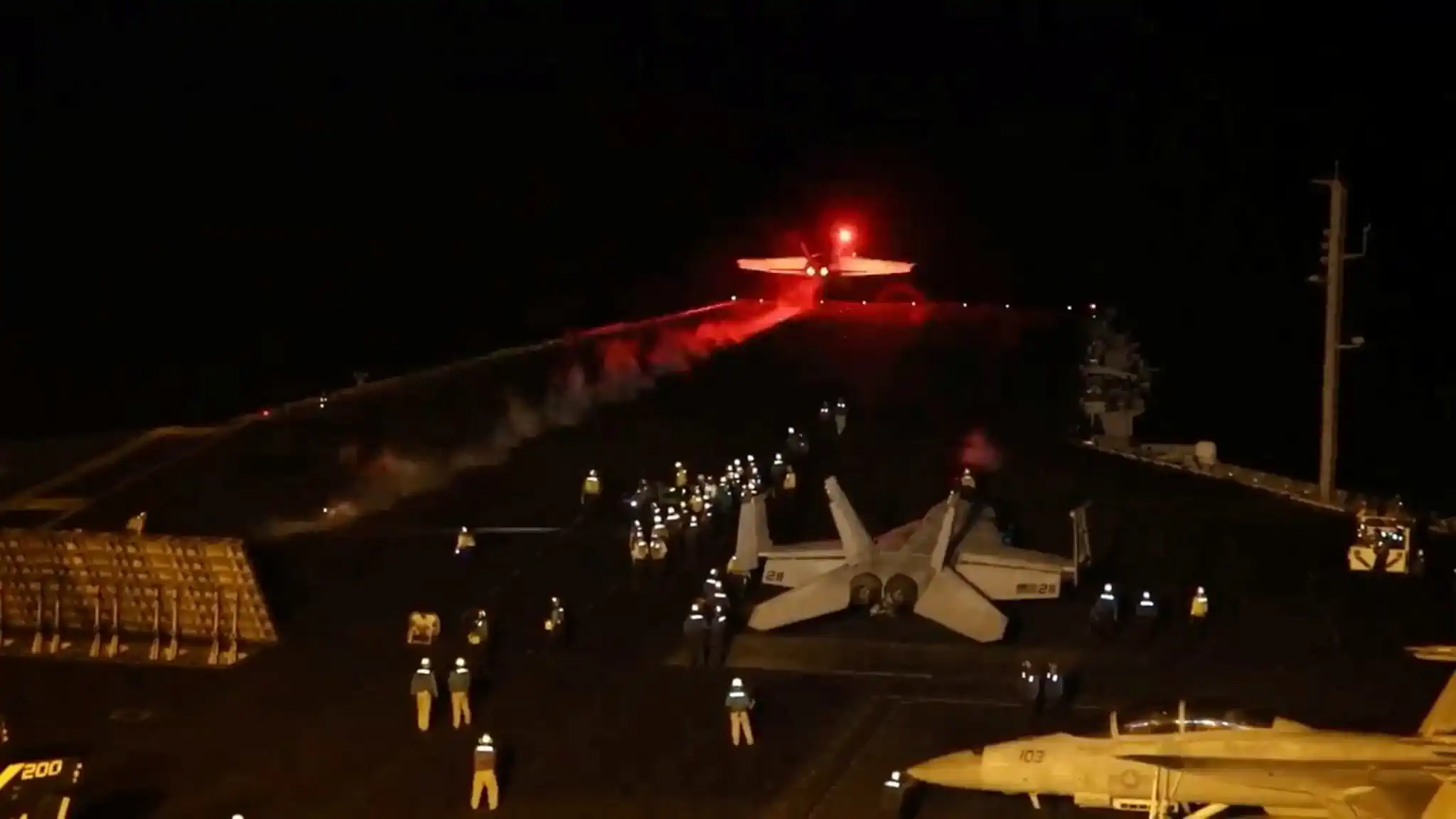
In a decisive military action, the United States launched extensive air and naval strikes against the Iran-backed Houthi movement in Yemen on March 15, 2025. This operation, ordered by President Donald Trump, targeted key Houthi infrastructure, including radars, air defenses, and missile and drone systems, aiming to restore security in the Red Sea—a vital corridor […]
In a decisive military action, the United States launched extensive air and naval strikes against the Iran-backed Houthi movement in Yemen on March 15, 2025. This operation, ordered by President Donald Trump, targeted key Houthi infrastructure, including radars, air defenses, and missile and drone systems, aiming to restore security in the Red Sea—a vital corridor for global maritime trade.
Details of the Strikes
The offensive was executed using fighter jets from the USS Harry S. Truman, a Nimitz-class aircraft carrier stationed in the northern Red Sea, alongside U.S. Air Force attack planes and armed drones launched from regional bases. The coordinated strikes resulted in multiple explosions near Yemen's capital, Sana'a, leading to significant casualties.
Casualties and Humanitarian Impact
Reports indicate that at least 31 individuals were killed, with 101 others injured, predominantly women and children. Anees al-Asbahi, spokesperson for the Houthi-run health ministry, described the attacks as a "war crime," highlighting the severe humanitarian implications of the strikes.
Houthi Response and Regional Repercussions
In reaction to the U.S. offensive, the Houthi political bureau vowed to respond, stating they would "meet escalation with escalation." The rebels claimed to have targeted the USS Harry S. Truman carrier strike group with missiles and drones; however, U.S. officials have not confirmed these assertions. The Houthis' threats to resume attacks on commercial shipping in the Red Sea have raised concerns about potential disruptions to global trade routes.
U.S. Position and Strategic Objectives
President Trump emphasized that the strikes were necessary to protect American shipping and ensure freedom of navigation in the Red Sea. He warned the Houthi rebels that continued aggression would result in unprecedented retaliation, stating, "YOUR TIME IS UP, AND YOUR ATTACKS MUST STOP, STARTING TODAY. IF THEY DON’T, HELL WILL RAIN DOWN UPON YOU LIKE NOTHING YOU HAVE EVER SEEN BEFORE!"
Iran's Involvement and International Implications
The U.S. operation also serves as a stern warning to Iran, which is accused of supporting the Houthi rebels—a claim Tehran denies. The strikes underscore the broader geopolitical struggle in the Middle East, with the U.S. aiming to curb Iran's influence and prevent it from acquiring nuclear capabilities.
Global Reactions and Future Outlook
The international community has expressed deep concern over the escalating violence and its potential impact on regional stability. The recent U.S. designation of the Houthis as a foreign terrorist organization further complicates diplomatic efforts to resolve the conflict. As tensions rise, the possibility of retaliatory actions looms, necessitating urgent calls for de-escalation and renewed peace negotiations.
In conclusion, the U.S. airstrikes in Yemen mark a significant escalation in the ongoing conflict, reflecting the intricate dynamics of Middle Eastern geopolitics. The operation highlights the challenges in balancing military objectives with humanitarian considerations and the imperative for comprehensive strategies to achieve lasting peace in the region.